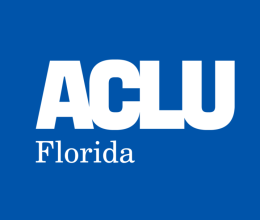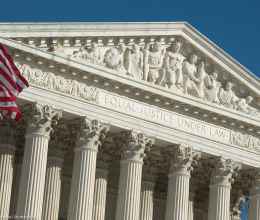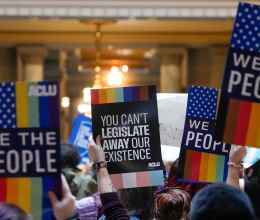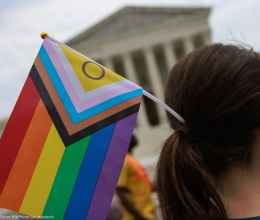
On Monday, April 19, 2021, Gov. DeSantis signed a controversial anti-peaceful-protest bill into law, HB1. Here’s what the law does:
Broadens the Definition of a Riot:
Many of the bill’s provisions are applicable when a gathering is deemed a “riot.” Law enforcement is given broad discretion in applying these laws.
The law’s definition of riot is full of ambiguity. The law states:
A person commits a riot if he or she willfully participates in a violent public disturbance involving an assembly of three or more persons, acting with a common intent to assist each other in violent and disorderly conduct, resulting in:
(a) Injury to another person;
(b) Damage to property; or
(c) Imminent danger of injury to another person or damage to property.
Therefore, it is unclear:
- Whether the person needs to act with a common intent to commit violence or disorderly conduct with the group of three.
- Whether the person needs to be violent, or if it is enough that a gathering is violent.
- Whether the person’s actions need to result in injuries, property damage, or imminent danger of such, or if it is enough that the conduct of the group of three does.
Because the law is unclear in these respects, we are concerned that law enforcement may adopt the broadest possible interpretation and thus interpret their authority to arrest individuals extremely broadly.
Once a gathering is deemed a riot, it can be deemed an aggravated riot, carrying up to 15 years’ imprisonment, if:
- There are a total of 26 people involved.
- The person causes great bodily harm to someone not participating.
- The person causes more than $5,000 in property damage.
- The person displays, uses, or threatens to use, a deadly weapon.
- The person, by force, or threat of force, endangers the safe movement of a vehicle on a public street, highway, or road.
People can also be charged with inciting a riot if they “willfully” incite someone else to participate in what is deemed a riot.
Once something is deemed a riot, no bail is allowed until first appearance (within 24 hours of arrest) and penalties are enhanced for:
- Assault and Aggravated Assault
- Battery and Aggravated Battery
- Mob Intimidation
- Battery on a Law Enforcement Officer
- Burglary
- Theft
- Unlawful Assembly
New Crimes: Mob Intimidation
Even if something is not deemed a riot, it could be deemed mob intimidation, which carries a penalty of up to a year in jail:
It is unlawful for a person, assembled with two or more other persons and acting with a common intent, to use force or threaten to use imminent force, to compel or induce, or attempt to compel or induce, another person to do or refrain from doing any act or to assume, abandon, or maintain a particular viewpoint against his or her will.
There is no definition of “force” or “threaten to use imminent force,” and we expect that law enforcement will interpret this very broadly.
New Crimes: Doxing
Publishing someone’s information online can now amount to a first-degree misdemeanor called “Cyberintimidation by publication”:
It is unlawful for a person to electronically publish another person's personal identification information with the intent to, or with the intent that a third party will use the information to:
(a) Incite violence or commit a crime against the person; or
(b) Threaten or harass the person, placing such person in reasonable fear of bodily harm.
Protects Monuments
The law now provides special protection to monuments, memorials and “historic” objects. The terms “memorial” and “historic property” are very broad. Damages of more than $200 are penalized as a third-degree felony, punishable by up to 5 years in prison. Destruction or pulling down such an object is a second-degree felony, punishable by up to 15 years in prison.
Protects Those Who Harm Protesters
The law provides an affirmative defense in civil actions for personal injury, wrongful death, or property damage if the person harmed is shown to be a “participant acting in furtherance of a riot” by either conviction or a preponderance of the evidence.
What this means is that if a person is harmed at a gathering and sues the person who harmed them, the person they sue can claim they should not be held responsible because the injured person was rioting. The person sued would then have to show it was more likely than not (however slightly) that the injured person was rioting. If they succeeded, the person who caused the harm would not have to pay any damages even if it was clear they intentionally harmed the protester.
Erodes Home Rule:
The law gives the Governor veto power over police budgets:
- If a city reduces the police department’s budget, for any reason, a member of its governing body (like the city council) or the local state attorney can appeal to the Governor. The Governor and Cabinet can then review the budget and amend or modify the budget as to each item within the operating budget of the police department.
The law exposes local governments to unlimited damages liability after any gathering deemed a riot:
- The law establishes that municipalities have a duty to “allow [law enforcement] to respond appropriately to protect persons and property during a riot or an unlawful assembly based on the availability of adequate equipment to its [law enforcement officers and relevant law].” If the municipality breaches this duty, it is civilly liable for any damages proximately caused by the breach. The usual caps on damages do not apply.
Take Measures to Protect Yourself
- Stay away from cars, and do not block traffic
- If counter-protesters arrive, do not engage with them, and remain peaceful
- If any person threatens violence or becomes violent, regardless of whether you are involved, immediately retreat to avoid being unlawfully arrested
- Do not engage with police, and if police threaten arrest or other use of force if crowds do not disperse, retreat to avoid being unlawfully arrested



